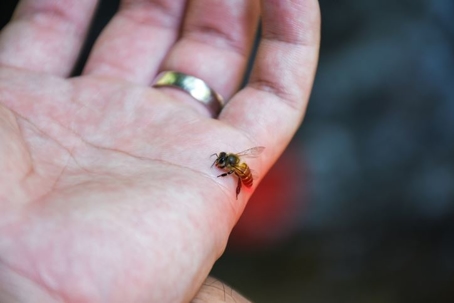Yuma Pest Blog
A bee sting is just a nuisance for most people. After a bee sting, you may experience redness, swelling, itching, and sharp pain in the affected area- but nothing serious. However, for people who are allergic to bees, multiple stings can cause problematic health complications. Sometimes they can turn out to be life-threatening. When a bee stings you, it releases its stinger into your skin, which ultimately kills it. It also leaves some venomous toxin, which causes pain and other symptoms.
Home remedies for bee stings
While some people don’t know what to do for a bee sting, most bee stings can be treated at home. However, if you experience severe allergic signs, see a healthcare provider. If a bee stings you, the first thing should be to remove the stinger using your fingernails’ edge. This will help you reduce the toxins being released into your skin. Wash the affected area with soap and water. Placing ice on the sting site is the best way to reduce toxin absorption. It also reduces swelling.
Most bee sting treatments are not scientifically backed, but they have been passed down from generations, and most of them are effective. Use below home remedies when stung with a bee:
1. Use baking soda
Applying a paste of water and baking soda on the affected area will reduce itching, pain, and swelling. Baking soda neutralizes the bee toxin. To use this method as a bee sting remedy, apply a layer of the paste directly on the affected area and cover with a bandage for 15 minutes.
2. Honey
Honey helps with pain, itchiness, and wound healing. To use it as a bee sting treatment, apply a small amount of honey on the stung area, and cover with a loose cloth or bandage for one hour.
3. Toothpaste
While experts don’t fully understand why toothpaste helps bee stings, most claim that its alkalinity neutralizes the bee stings toxins. Apply a small amount on the affected area and let it sit for a while.
4. Use wet aspirin
Applying wet aspiring on the sting site is a popular bee sting remedy. It is useful for reducing swelling and pain. A 2003 study showed that aspirin’s application to the affected area reduced pain and swelling duration.
5. Meat tenderizer
Meat tenderizer contains an enzyme known as papain, which is believed to break down the protein that causes itching and pain. To use meat tenderizer as a bee sting treatment, make four-part water and one-part meat tenderizer solution. Apply the solution to the sting area and let it sit for half an hour.
A bee sting is painful for everyone, whether you’re allergic or not. If a bee stings you, remain calm and use any of the above treatments. Chances are you will be okay. Ensure you take note of your symptoms and treat them accordingly. If you don’t know what to do for a bee sting, ask for help from loved ones and friends.
Contact Us Today
Don’t let your family or pets get stung by a bee. Call a pest control expert like Yuma Pest to safely remove a bees nest from your yard. Contact us today to schedule an appointment.

